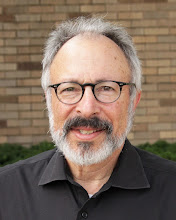Earlier today (Tuesday), we held a program at the Memorial to the Warsaw Ghetto – in conjunction with the groundbreaking of a new museum to be built near the site commemorating Jewish life in Poland. It was attended by the “President” of Warsaw (essentially the Mayor) and a significant number of dignitaries. The groundbreaking ceremony preceded our concert program. It was a program not for our sake but for the sake of the people here who are moving forward with this important project. The musical program we provided included performances by cantors who had specific family ties to the Warsaw or Polish Jewish community – Yiddish songs that we work hard to sing well and understand – but were so much part of the culture here. The assembled cantors sang a Shehecheyanu, a memorial psalm, and Zog Nit Keynmol, the defiant Partisan Song.
Before the Memorial Program, we visited the massive Jewish cemetery, eternal home to approximately a quarter million Jews. It was a historic cemetery before the terrible events of the Holocaust, and continues to be used today. During the days of the Warsaw Ghetto, 1000 people were dying daily (given that the Nazis supplied an average of 184 calories per person per day, guaranteed to lead to sickness and starvation), creating an unimaginable challenge on so many levels. How do you deal with such a situation in your face, in your eyes, in your nose? Most would have to shut themselves off from it, become somewhat less human – in order to survive themselves. We visited one area in the cemetery that was a mass grave. Yet there had to be many. How many souls just dispatched like flies? Without a thought? In cruelty and pain?
After the Memorial Program, we visited other Ghetto sites – Mila 18, the headquarters of the uprising, where the leaders killed themselves on May 8 after the defeat of the uprising. The ghetto was 2 ½ square miles – in which 300,000 to 450,000 fates were decided (Berk says 465,000 to 485,000 – almost all in tragedy. Consolidation of Jews into the ghetto (and ejection of 100,000 Catholics from it) began in November 1940. A year later (October 1941), the two ghettos that had existed – large one and a small one – were consolidated. Or, to put it another way, the small ghetto was eliminated and its residents forced into the large ghetto. The uprising began on April 19, 1943. 5000 to 6000 people per day (perhaps this was at the time of the liquidation of the ghetto only – in any case 300,000 over a 2 month period) were sent via Umschangplatz, a nearby train depot, to Treblinka. Treblinka is the opposite of Auschwitz/Birkenau, which was a vast, somehow awe-inspiring facility. Treblinka – 1100 x 2200 ft – merely a gas/cremation operation – the ultimate death factory.
Thursday, July 2, 2009
Subscribe to:
Post Comments (Atom)

No comments:
Post a Comment